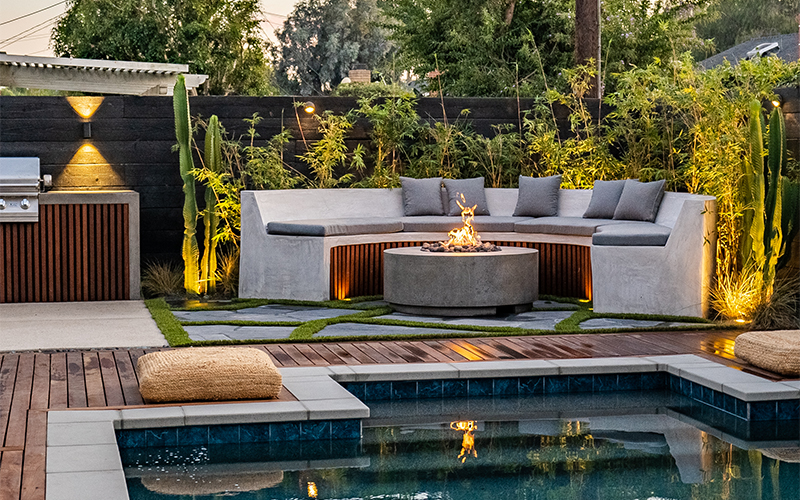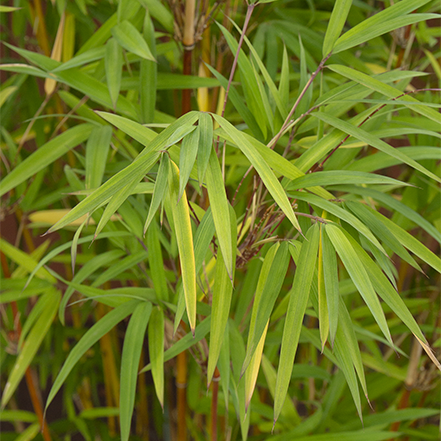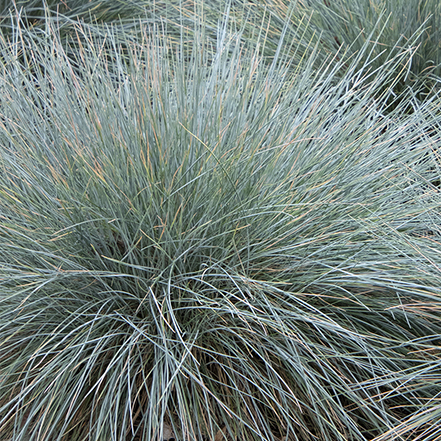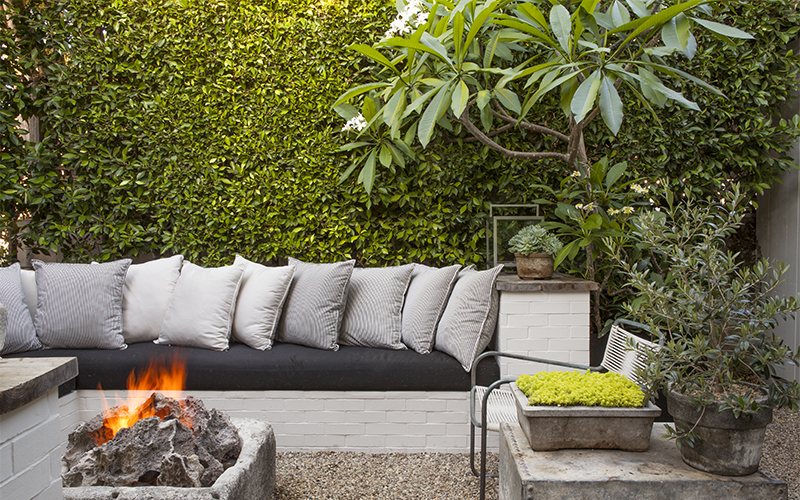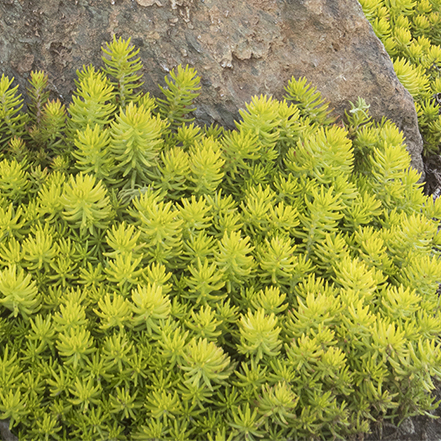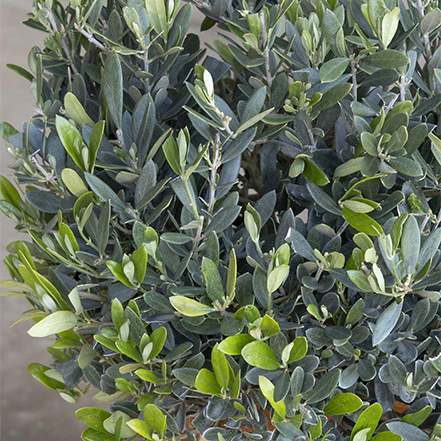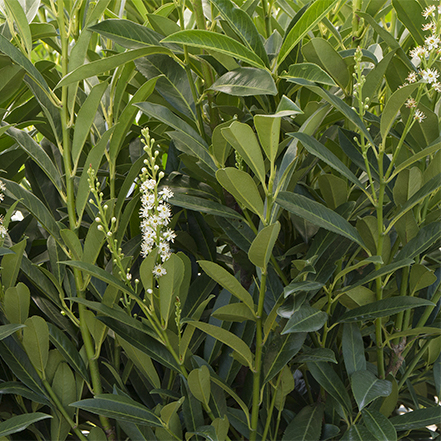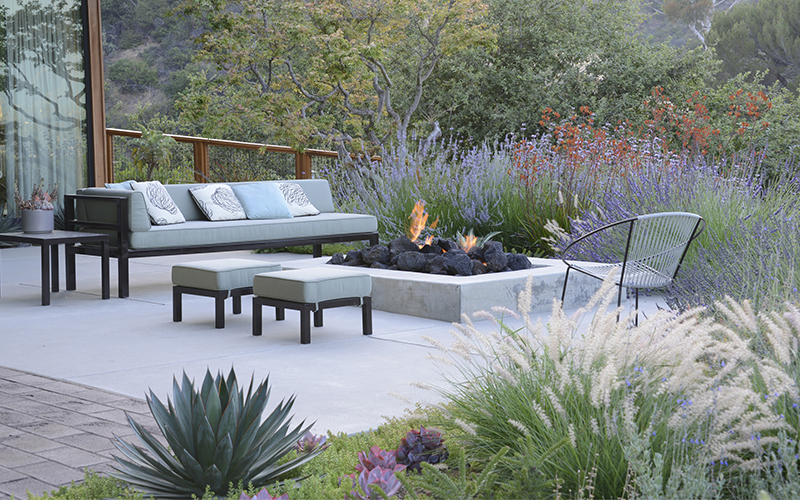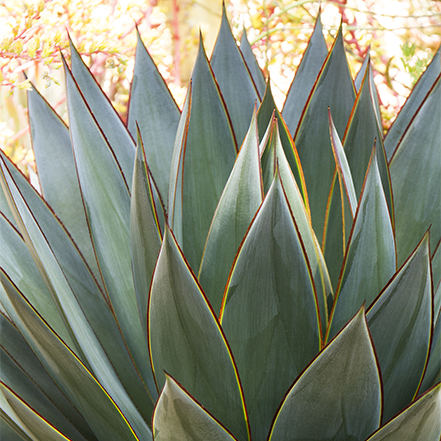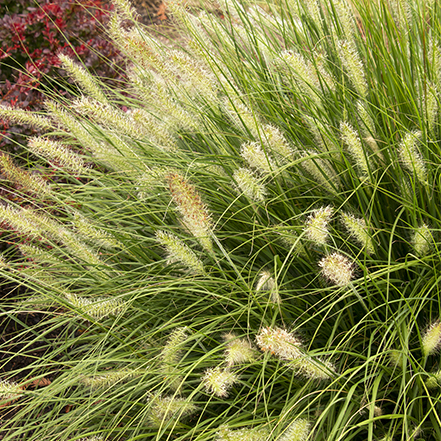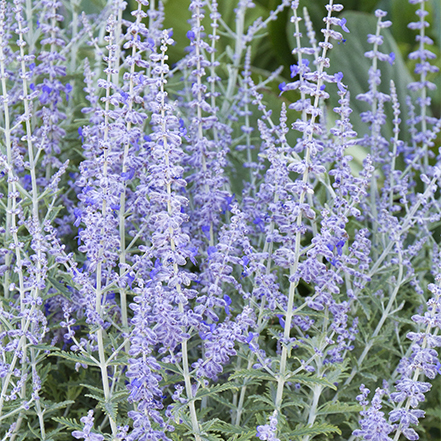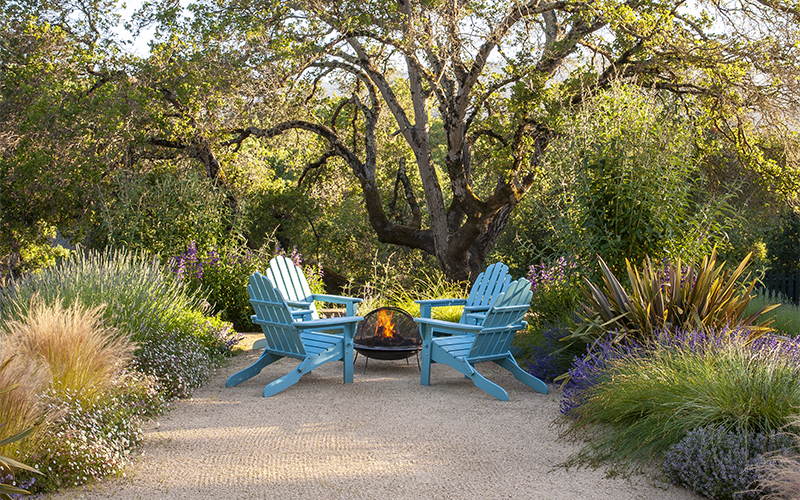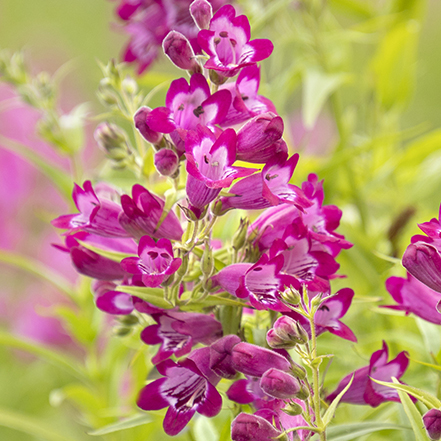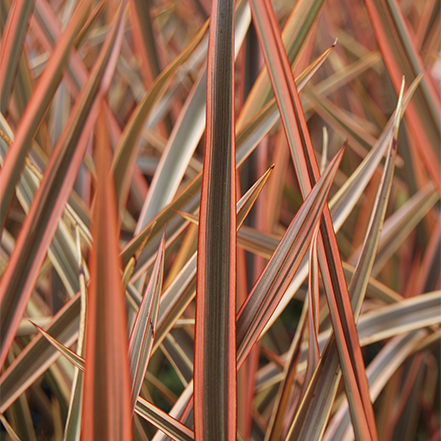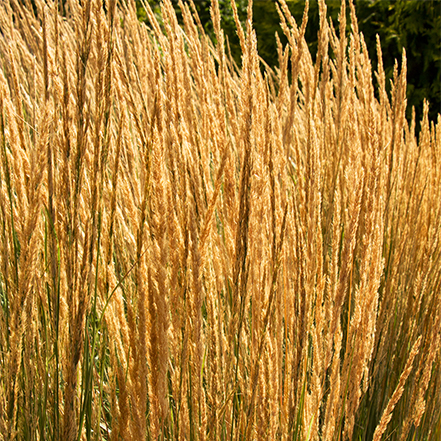Premier landscape designers agree that a fire pit is an essential part of an inviting backyard. Designers Mike Pyle and Scott Shrader think of fire pits as opportunities to create magnetic moments in the backyard landscape. Scott explains, "fire is that one visual connector and attractor that can really get someone interested in going outdoors. If you're inside and you see a cozy fire moment outdoors, it's a great way to get you outside."
Mike agrees, "the firepit is the heart of the backyard. It pulls people together. There's not a lot of elements in a backyard that can do that."
(above) Russian sage, dwarf fountain grass, and kangaroo paw. These were used to frame the view from this inviting fire pit in the hills of Pasadena. Find a detailed description of the landscaping around this fire pit below.
Whether you're working with a custom-made masterpiece, a simple fire bowl, or a rock-lined hole in the ground. Your backyard fire pit landscape design is worthy of your time and attention. We talked to some of the best outdoor room designers in the country. They delivered design tips for your backyard fire pit landscape and pulled together professional examples. For instance, clear design lessons, inspiration, and plant recommendations to take to your local garden center. Have a backyard fire pit that you love already? Share it with us @MonroviaPlants.
10 Design Tips for Designing a Landscape around a Fire Pit
- Let your specific site conditions and "sense of place" inform your fire pit landscape design. Choose plants that will reflect your style, and are appropriate for your climate, conditions, and size of space.
- The fire pit itself is an important part of the landscape. Consider what role you want it to play before committing to a specific fire pit style. If it's part of a casual dining space or lounge, choose a fire pit that doubles as a coffee table. With at least 12" of tabletop around the fire for people to set their food or place their feet.
- Keep guests comfortable once they're around the fire by providing cozy seating. Designer Scott Shrader recommends seating that is at least 31" deep and allows room for soft pillows to lean back on.
- Use hedges or tall plants around your fire pit to create the walls of your outdoor room.
- If you have a view to enjoy, take a pass on the green walls. Optimize the view with plantings that won't obstruct it.
- Especially in smaller landscapes and spaces, stick to a simple plant, color, and material palette. This approach will create a more soothing feel.
- Use soft-textured, low-growing plants to soften the transition from the fire pit landscape to the rest of the backyard.
- Plantings should be far enough away from the fire to allow for fire safety as well as ample seating space.
- Use containers to add depth and soften your seating space. Containers also provide opportunities to experiment with color, structure, and types of plants.
- If you have the room, site your fire pit further away from your house. This will create that magnetic outdoor moment that pulls people in.
Expert Fire Pit Landscape Design Lessons
Soften Lines with Plants
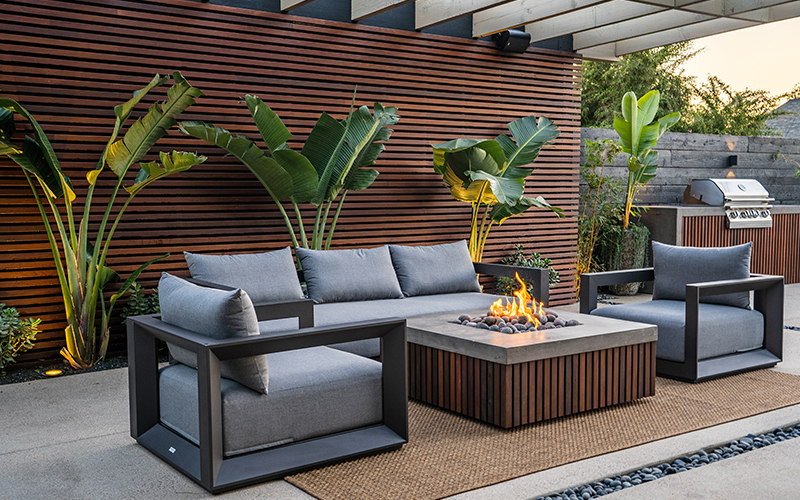
Overview: When it comes to this upscale firepit landscape design, Mike Pyle had a clear goal in mind. "There are a lot of hard lines in that area and I use plants to soften them up, as well as hide the neighbor roofs and telephone poles behind." He accomplishes this with a wall of bamboo behind the semi-circle seating. He anchors either side with the statuesque Euphorbia ammak. He uses fescue grass at the base of the towering Euphorbia. This softens the transition from the striking vertical succulent to the pavement.
Mike uses freestanding firepits of his own design and surrounds them with equally sophisticated outdoor furniture and hardscape materials. In the lounges pictured above, he softens the straight lines of the fence or wall with a simple plant palette. This sets the seating area against a backdrop of lush foliage.
In the sitting room pictured above, Bird of Paradise (Strelitzia reginae) is paired with Senecio decaryii. This turns green when not in full sun. Banana plants or cannas paired with Mt. Everest Blue Chalksticks Senecio would achieve a similar look.
Design advice: Use plants to soften transitions, hard angles, and straight lines. Tall plants like bamboo are perfect for providing privacy. They hide the realities of urban living, like telephone poles and electric lines. Choose plants with large leaves to surround seating areas with a serene lushness. This invites visitors to sit back and relax.
Love Mike's approach to outdoor design? See more of his designs on the HGTV show, Inside Out.
Design: Mike Pyle
Photo: Jake Lamons
3 Plants to Get This Look
Golden Goddess
Bamboo
A well-mannered clumping bamboo that is easily maintained to a modest 8' tall. Excellent for containers, and has a graceful, arching form. Zones 8-10.
Hardy Fiber
Banana
Use as a cold-hardy tropical foundation planting. Or, in large containers around a sitting area to get a serene, upscale look. Up to 15' tall and 10' wide. Zones 5-11.
Elijah Blue
Fescue
Icy-blue coloration to this clumping ornamental grass holds up even through the heat of summer. Up to 12" tall and wide. Zones 4-11.
Overview: This sophisticated backyard lounge is one of three outdoor rooms in designer Scott Shrader's own backyard. Where he "divided the small backyard space into three separate zones, which are all used to entertain." Above is a shot of the lounge, where people hang out before or after dinner. A Ficus nitida hedge forms the walls of each outdoor room. Scott says, "rather than using block or stucco or fencing, I like to use green walls because they help your eye recede into nature, versus looking at something that stops the eye at the property line." A White Fragrant Himalayan Champaca spreads like an umbrella over the corner of the banquette. Vintage stone pots are filled with echeveria, stonecrop, and a dwarf olive.
Scott loves using containers (he has an affinity for old concrete or stone orchid pots) in his designs. This is because they allow for constant experimentation. He puts small trees like Japanese maples and dwarf olives in them. When he has a party, "rather than cutting flowers, I'll bring them inside." As long as you're matching your plant choices with your growing conditions, you can achieve just about anything with containers.
Design Advice: When you're in a small space, it's important to create a calm feeling. Use a simple plant, material, and color palette. Even in containers, Scott recommends sticking to a small number of plant types. Making it more simplified can create a more relaxing space, especially when it's small. Create green walls for your outdoor rooms with an evergreen hedge of ficus or Schipka cherry laurel. Prune annually to maintain clean lines and control vigorous shrubs.
Love this outdoor room? Check out Scott's book, The Art of Outdoor Living, and learn all about how to create serene outdoor rooms.
Design: Scott Shrader
Photo: Lisa Romerein/OTTO
3 Plants to Get This Look
Little Ollie®
Dwarf Olive
A fruitless dwarf variety that is heat-, drought-, and salt-tolerant. The graceful multi-branching habit can be trained as a single trunk tree and makes a beautiful container specimen. Up to 6' tall and wide. Zones 8-11.
Schipka
Cherry Laurel
A beautiful, reliable option for an evergreen hedge or green wall in an outdoor room. Fragrant white flowers appear in spring. Can get up to 10' tall and wide over 10 years. Zones 6-9.
Frame the View
Overview: Judy Kameon of Elysian Landscapes designed this beautiful backyard garden around a mid-century home. It's situated high in the hills of Pasadena. The aspect of the home offers stunning views of the city and mountains around it. With her design, Judy celebrates these views by framing them with plants. Tall Russian sage and kangaroo paw act as a colorful and upright frame on the side. They also provide privacy from neighbors. Lower growing plants like lavender, fountain grass, agave, and succulents add softness, visual interest, and beauty. (Without interfering with the expansive view.)
Design advice: You can use plants to "frame" anything. From an expansive view to a water feature or the fire pit area itself. Site plants with their mature heights in mind. Placing the low-growing plants in front of, and leading to, the view, space, or object that you want to accentuate. Site tall plants on the edges of a view, or behind the celebrated space or object.
Design: Judy Kameon of Elysian Landscapes
Photo: Courtesy of Elysian Landscapes
3 Plants to Get This Look
Blue Glow
Agave
Perfect for hot, sunny, and dry gardens, as well as humid Mediterranean-like climates. The cool blue-green leaves have distinctive yellow-edged red margins. Each leaf tip bears a short red spine. Up to 18" tall by 24" wide. Zones 8-11.
Dwarf
Fountain Grass
A waterwise, bird-friendly grass with fluffy plumes. It arches above a lush green fountain of foliage, which turns a golden russet color in fall. Up to 3' tall and 2' wide. Zones 4-11.
Lacey Blue
Russian Sage
A vibrant, reliable, easy-care and drought- and heat-tolerant perennial that adds height and color to the garden. This more compact variety also doesn't flop. Up to 28" tall and 26" wide. Zones 4-10.
Celebrate the Site
Overview: Located in the same jaw-dropping property as one of our favorite pool landscapes. It's not a surprise that this simple yet stunning fire pit landscape caught our eye. Located on a terrace beside the pool. This vibrant fire pit nook is nestled against one of the many native oak trees on the property. The designers at Arterra named this property design "Close to the Land," and it's evident that the landscape design and plant choices are meant to celebrate the natural setting. Feather reed grass, fountain grass, and New Zealand flax offer soft structure. Especially to beardtongue, lavender, hebe, and other perennials surrounding this naturalistic fire pit setting.
Design advice: Every outdoor space has something to celebrate. Let your specific site, climate, conditions, wants, and needs inform your design from start to finish. When you're in tune with your land and your needs, you are always able to create something beautiful and purposeful. Surround your fire pit in a landscape that celebrates a "sense of place." Choose a simple palette of perennials. Ones that thrive in your area and reflect the form and color palette that you see in similar natural settings.
Design: Arterra Landscape Architects
Photograph by Michele Lee Willson; Courtesy of Arterra Landscape Architects
3 Plants to Get This Look
Harlequin™
Magenta Beardtongue
A colorful, waterwise, and easy-care choice that also offers dependable vertical interest. This Monrovia exclusive is showy, hardy, and effortless. Up to 22" tall and 16" wide. Zones 5-9.
Indigo Pearl™
New Zealand Flax
A Monrovia exclusive, with outstanding foliage that has deep plum centers and creamy pink edges. The sturdy, stiff leaves don't flop like other flax varieties. Up to 4' tall and wide. Zones 8-11.
Overdam Feather
Reed Grass
A striking upright grass that thrives in sunny, dry climates. Green foliage has yellow margins and plumes turn a rich gold in fall. Sterile. Up to 2' tall and wide, with bloom stalks that reach 6' tall. Zones 4-9.
Get More Inspiration for Your Backyard
- Get design inspiration and free design guides delivered directly to your inbox by subscribing to our Grow Beautifully Newsletter.
- Backyard Landscape Ideas from Award-Winning Designers
- Refreshing Poolside Landscape Ideas
- Create an Enchanting Garden Where the Whole Family Can Play
- How to Create Outdoor Rooms and Magic Moments in Your Backyard
- How to Create a Peaceful Retreat with Rhythm and Repetition





